
Today, The AFR has today reported on new research released by the Urban Development Institute of Australia (UDIA) showing the explosion of land prices across Australia:
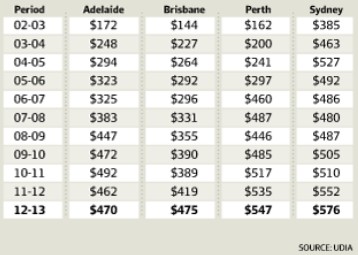
According to UDIA, the cost of vacant lots have spiked by nearly 150% per metre across Australia over the past decade, with the number of lots released to market also slumping recently.
The UDIA blames excessive taxes and charges, along with constipated planning systems that have restricted land release. It has also called for housing affordability to be placed firmly on the agenda of governments, along with more infrastructure investment to unlock land, and the implementation of broad-based land taxes in place of stamp duties.
“What concerns us is that a family can no longer afford a back yard where a family can play and grow.”
This corroborates RP Data’s recently released new research showing the explosion of vacant lot prices across Australia. According to RP Data, median lot prices nationally have risen by over 400% over the past 20 years:
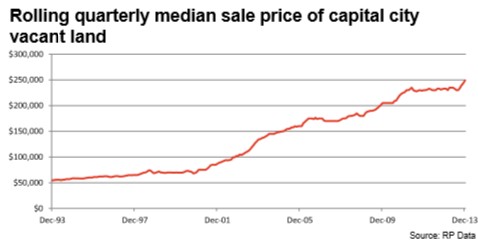
As lot sizes have shrunk by nearly 30%:
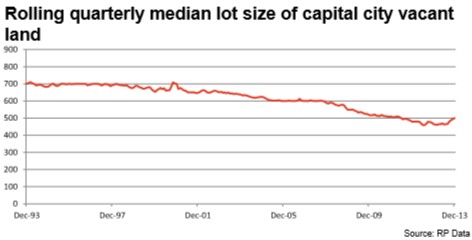
Causing the rate per square metre to explode by a whopping 564% over the past 20 years:
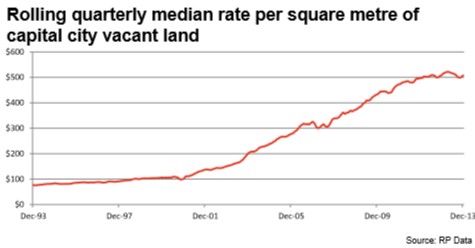
With all major capitals affected:
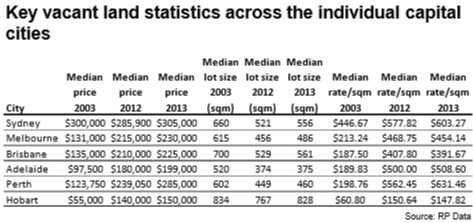
Clearly, the explosion of lot prices is a key factor behind the collapse of detached housing construction since the mid-1990s, since it has become increasingly difficult for the industry to supply stock at a price households are either willing or able to pay (see next chart).
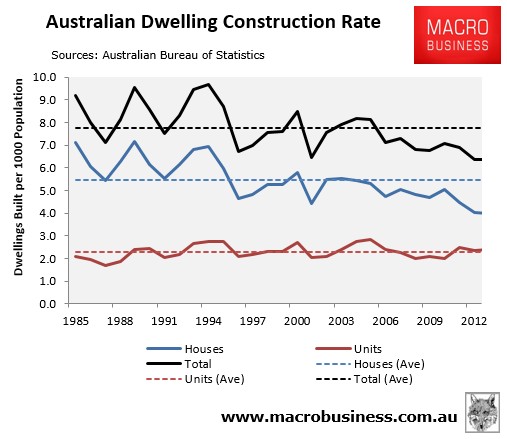
The cost escalation on the fringe has also placed upwards pressure on land prices in established areas, reducing housing affordability across-the-board.
This escalation of lot prices has little to do with easy credit, negative gearing, or foreign investment, and everything to do with the lack of land release, constipated planning systems, and the front-loading of taxes and charges on new development.
If ever there was a time to relax artificial restraints on land supply and the first-user-pays-all approach to infrastructure provision, as well as introducing a broad-based land tax, it is now.

